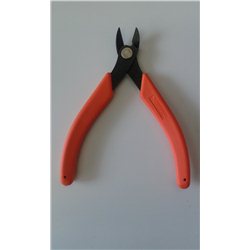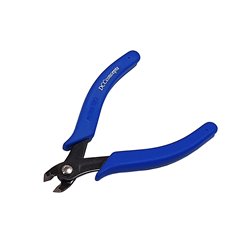For a beginner, one of the easiest ways to create hilly or rugged terrain for a model railway layout is to use...
No products
Product successfully added to your shopping cart
There are 0 items in your cart. There is 1 item in your cart.
Search Tips
Christmas and New Year
We are dispatching orders every weekday apart from Christmas Day, Boxing Day and New Year's Day.
If you select next day delivery at checkout, please note deliveries are not made on public holidays or Sundays.
The shop in Sandown is open 23rd and 24th December, then closed from 25th December, reopening on 30th December.
What are the best options for cutting tracks?
Inevitably there will be times when a modeller will need to cut sections of a track when creating a layout. For those creating larger or more complex layouts, this may well become a more regular occurrence! So bearing this in mind what are the best options for cutting track?
Some modellers may opt for some sort of Dremel. This will inevitably do the trick but may not offer the cleanest cut. Additionally, mini-drills and their associated cutting blades may create hazardous metal filings so good eye protection is essential.
Most modellers will have built up an impressive toolbox over the years to cover the needs of a wide variety of modelling projects. Inevitably this will include some kind of saw, often with a variety of blades. Razor saws are generally made from good quality steel and have a very high tooth count which is ideal for cutting track segments over a wide selection of gauge sizes. Regular waxing can help protect the blade and increase its longevity and allow it to offer a clean cut with minimal burrs. Some saws may also be supplied with a mitre box. This has the advantage of holding the track section firmly in place whilst the saw is deployed through manufactured groves which enable a clean cut at a specific pre-determined angle.
Also available are track cutters which have been produced with this specific task in mind. Track cutters look very similar in most regards to a pair of snips so it is important to ensure the right tool is used for the right job. Not all snips are designed to cut metal tracks and as such can easily be damaged if incorrectly used, notwithstanding the fact that they will not necessarily offer a clean cut. Most Track Cutters are designed to be suitable for use on a number of different gauges.
Whichever option you use it is important to ensure the cut is clean and free of burrs. The most effective way to do this is to cut perpendicularly to the track. This will offer a minimal cutting surface which is the best option for a clean cut and offers the best protection to your cutting tool.
Click here to receive the tips weekly in your mailbox. You can unsubscribe at any time.










